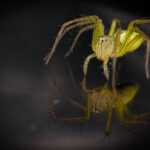As a primary act of defense, some bees sting when they feel threatened. We’ll explain why these insects attack, what happens after a sting, and how to treat a bee sting. While there are different types of bees, it’s important to note that not all bees sting.
Why do bees sting?
Generally, bees sting people and animals when they feel they are in danger — this could be due to sudden movement, proximity to their hive, or aggravation. While it can be hard to pinpoint the reason a bee may sting, you can avoid being stung by not bothering them or staying away from their hive.
What happens when a bee stings?
Though a bee’s stinger looks like a smooth needle, the sides of its stinger are barbed. Most bees are able to keep their stinger intact after a sting. However, honey bees in particular secure the stinger in the target and are forced to tear the rest of their body away from the stinger.
Can bees sting more than once?
Unlike hornets or wasps, bees can’t sting repeatedly in the same way. For honey bees, their stinger is torn from their body after one sting and cannot grow a new one. Other bees, like bumblebees, may sting repeatedly but have a much smaller stinger.
Do bees die when they sting?
Honey bees are the only bees that die after stinging. Because the stinger tears away the lower half of their body, they are unable to survive the attack.
Are bee stings dangerous?
Generally, bee stings are not dangerous. However, if a person is stung many times or has an allergic reaction to the sting venom, bee stings can cause anaphylactic shock. In these situations, seek medical treatment immediately.
Typical reactions to bee stings are:
- Instant, intense pain
- Redness at the site
- Slight swelling at the site
If you’re not allergic to bees and have a single sting, there are home remedies to remove the stinger safely and treat the affected area.
It’s important to remove a stinger from the site of the sting to prevent any further irritation. You can do so by following these steps:
- Pull the skin around the area to better examine the sting site.
- Using a flat-edge item, like your fingernail or the edge of a credit card, scrape the stinger out of your skin. Tweezers can be used to extract deeply-set stingers.
- Wash the sting site using soap and water.
- Use a cold compress to reduce inflammation and itchiness.
- Take over-the-counter anti-inflammatory medication, like ibuprofen or aspirin, as needed.
If redness and swelling don’t reduce within a few days, make an appointment to see your doctor.
Request your free quote from Las Vegas Pest Removal
Attempting to remove or control bees from your property can be a challenge. Our team of bee control experts at Las Vegas Pest Control can safely and effectively remove bees from your home or business. Call us today for a free estimate or contact us online to schedule an appointment.




